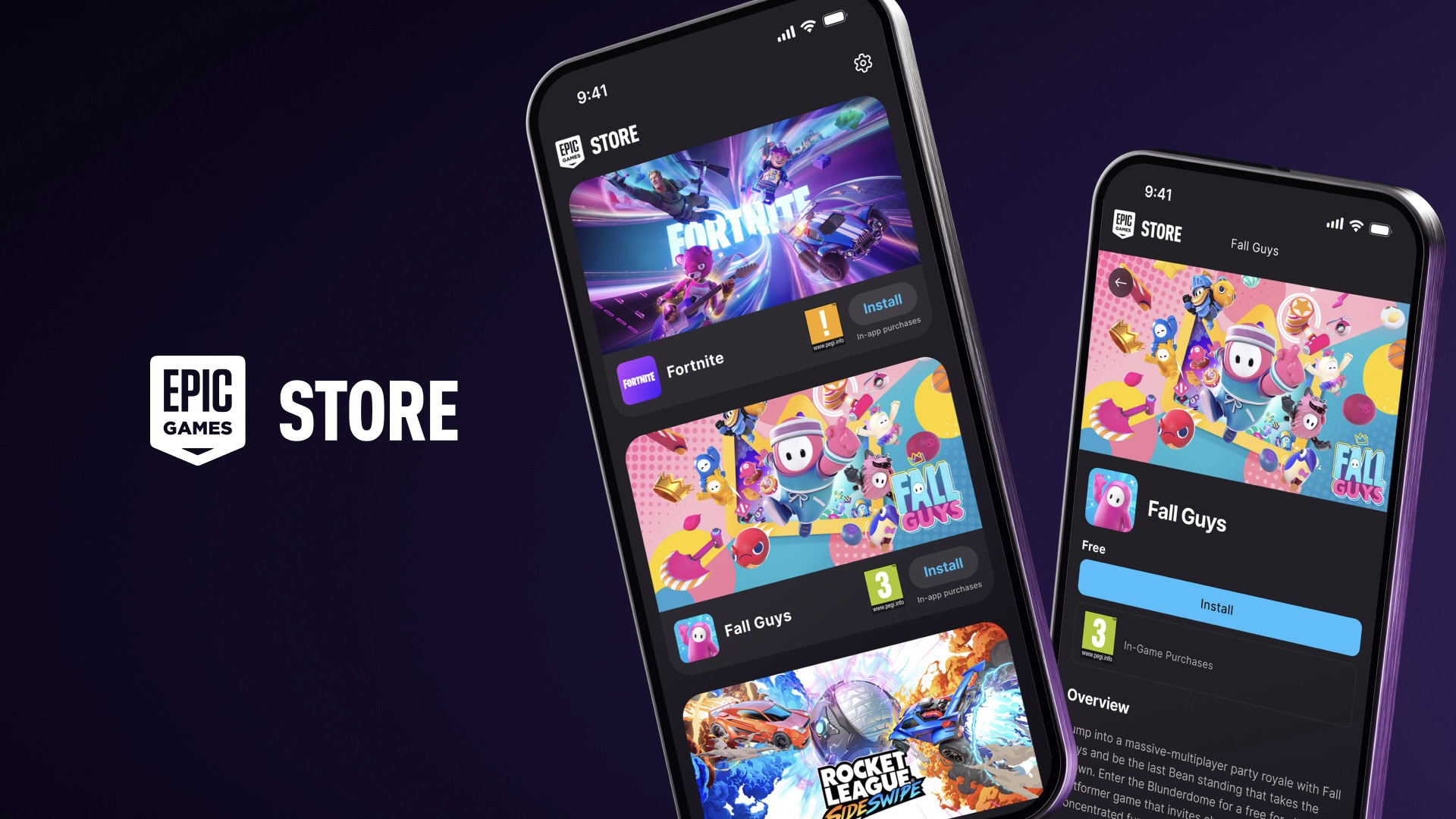As a CEO, you make dozens of critical decisions daily. But are you basing them on complete information or fragmented business data points?
Without a comprehensive view of your organization’s performance, blind spots develop, opportunities vanish, and threats go undetected until it’s too late.
Here’s the fix: a well-designed CEO dashboard that brings your business-critical data into one, real-time view. No toggling between spreadsheets, no asking five people for updates.
And the payoff is real.
Data-centric organizations are 58% more likely to exceed their revenue goals than their non-data-centric counterparts. Data-intelligent organizations also realize an 81% advantage in growing revenue and a 173% advantage in complying with regulations and requirements.
This guide walks you through exactly how to build a CEO dashboard—from the must-have metrics to dashboard examples that deliver clarity fast. And no, you don’t need a degree in data science or fancy, complex tooling to get started, especially when you already have —the everything app for work! 💪🏼
How to Create a CEO Dashboard for Business Visibility
⏰ 60-Second Summary
- A CEO dashboard gives you a live snapshot of your business—what’s working, what’s stalling, and where you need to act
- It pulls in metrics from across the company (revenue, operations, customer success, hiring, and more) so you’re not chasing down data in a dozen different tools
- The most useful dashboards are tailored. They’re not crammed with every KPI under the sun. Start by focusing on north star metrics that truly move the needle for your business
- Identify the various data sources that will feed into your dashboard, such as your financial data systems, CRM tools, HR data, and reports from external sources
- Choose the right dashboard tool. Building a custom CEO dashboard is easier with all your data in one place. You can import the relevant metrics from various data streams into your dashboard tool, or you can use as your single source of truth
- ’s 1000+ integrations and API support also let you pull in data from your business systems and tools easily to create personalized Dashboards
- Once you have the data in place, design the dashboard layout for usability and simplicity. Remember to group related metrics together for a clearer picture. Provide filters and drill-down options for a comprehensive analysis
- Test, refine, and deploy the dashboard. Automate data input so the dashboards refresh automatically. Educate the executive team on its usage and ensure you keep reviewing and updating it for relevance
- makes the entire process faster with customizable cards and charts, dashboard templates, automated reports, and AI insights—so you spend less time analyzing and more time leading the business in the right direction
What Is a CEO Dashboard?
A CEO dashboard is a visual command center that presents your company’s most critical performance metrics in one consolidated view—think revenue growth, customer churn, cash flow, hiring pipeline, and operational efficiency. Instead of digging through different tools or pinging team leads for updates, everything you need is surfaced in one place.
But it’s not just a prettier spreadsheet. A good dashboard highlights trends, flags risks early, and keeps you focused on strategic goals, not busywork.
And it’s not one-size-fits-all. A startup founder might care about burn rate and user activation. A Series C CEO might prioritize ARR growth, team velocity, and expansion revenue. The point is: it adapts to your stage, priorities, and decision-making style.
📊 It’s how modern CEOs trade lagging reports for leading indicators—and make faster, sharper calls as a result.
What makes a good CEO dashboard?
The best CEO dashboards share three key characteristics:
- Real-time or near real-time updates: Showing current performance rather than historical reports
- Visual clarity: Using intuitive graphs, charts, and indicators that communicate status at a glance
- Actionable insights: Highlighting not just what’s happening, but signaling where attention is needed
Most importantly, an effective CEO dashboard goes beyond being a passive reporting tool. Instead, it acts as an active decision-support system that helps you spot trends, identify correlations between different business areas, and make faster, more confident strategic choices when time is of the essence.
Why CEOs Need a Dashboard
The higher up you are, the harder it gets to see what’s really going on.
As a CEO, you’re constantly shifting between strategy, investor conversations, and internal ops. But without a clear, up-to-date picture of the business, you’re left making decisions on instinct—or worse, outdated slides.
That’s where an executive dashboard changes the game. It gives you:
- Clarity without the wait: The average enterprise uses 112 different SaaS applications. Without a unified dashboard, you’re forced to jump between platforms, losing valuable context and time. A dashboard cuts through this complexity by surfacing only what matters. No more asking three departments to verify numbers or chasing weekly reports. A dashboard pulls live data from your core tools so you can act in real time
📮 Insight: The average professional spends 30+ minutes a day searching for work-related information—that’s over 120 hours a year lost to digging through emails, Slack threads, and scattered files. An intelligent AI assistant embedded in your workspace can change that. Enter Brain.
It delivers instant insights and answers by surfacing the right documents, conversations, and task details in seconds—so you can stop searching and start working.
💫 Real Results: Teams like QubicaAMF reclaimed 5+ hours weekly using —that’s over 250 hours annually per person—by eliminating outdated knowledge management processes. Imagine what your team could create with an extra week of productivity every quarter!
- Faster decision-making: When your metrics are visible and accurate, you can course-correct early. For instance, when market conditions shift, the window for effective response is narrow. A well-designed dashboard signals these changes immediately, allowing you to pivot strategies before competitors even recognize the opportunity or threat
- Accountability without micromanaging: Everyone sees the same goals and progress. That alone can drive alignment and autonomy across teams
- Investor and board readiness: Whether it’s a quarterly update or last-minute meeting, your key metrics are already organized and accessible
Simply put, a CEO dashboard transforms how you lead, moving you from reactive team management based on stale reports to proactive team leadership guided by real-time business intelligence.
What Metrics Should a CEO Dashboard Include?
There’s no universal set of metrics every CEO should track—but there is a right answer for your business, depending on your stage, goals, and model.
That said, most high-impact CEO dashboards cover five core areas:
1. Financial performance
- Revenue (monthly recurring, total, by segment)
- Burn rate and cash runway
- Gross margin and profitability trends
These show how fast you’re growing—and how sustainably.
2. Sales and pipeline
- New deals closed
- Sales pipeline and velocity
- Pipeline health (value, aging, conversion rates)
They help you understand what’s coming in next quarter and where to invest support.
3. Customer success and satisfaction
- Churn rate and retention
- Net Promoter Score (NPS)
- Support ticket volume/resolution time
These are your early warning signs if customers are moving on.
4. Product and delivery
- Roadmap progress
- Feature adoption
- Bug/issue volume
This is especially useful for SaaS and product-led orgs where delivery velocity directly impacts retention and revenue.


5. People and operations
- Headcount
- Open roles
- Team productivity metrics (e.g., sprint burndown, task completion rate)
Such a CEO dashboard visualizes how efficiently your company is operating behind the scenes.


💡 Pro Tip: Don’t track everything—track what changes behavior. A good rule of thumb is to focus on 8–10 metrics that tie directly to your company’s goals or growth levers.
How to Build a CEO Dashboard
Building an effective CEO dashboard is both an art and a science, where you need to balance data visualization with strategic storytelling. Here’s how to create one that transforms raw metrics into actionable leadership intelligence:
Step 1: Define Your North Star metrics
Start by identifying your “North Star metrics,” or the key objectives that drive your organization’s strategic goals. Every metric should answer a specific business question that leads to action.
📌 Examples of critical business questions include:
- Are we growing at the pace required to meet our annual targets?
- Is our business model becoming more or less efficient?
- Where are we winning or losing against competitors?
At the same time, consult with the executives who’ll be using the dashboard to understand their specific information needs.


With Goals, you can define these North Star metrics as trackable objectives, directly connecting your dashboard elements to strategic priorities. These goals are broken down into targets (quantifiable outcomes) and milestones (progress checkpoints), which you can assign to teams or individuals. This creates natural alignment between what you’re measuring and what matters most to the business.
📌 Let’s say your North Star metric is to grow Monthly Recurring Revenue (MRR) by 30% this year. In , you can create a Goal called “Increase MRR by 30%,” then break it down into:
- Targets like “Add $50K in MRR per quarter”
- Milestones such as “Launch new pricing tier” or “Hire 3 new SDRs by Q2”
Each Target can be tied directly to metrics in your CEO dashboard using Dashboards—whether it’s from CRM pipelines, campaign performance, or project delivery metrics. When someone closes a deal, completes a task, or hits a performance KPI, that progress auto-updates the Goal, giving you a real-time pulse on strategic execution.
Here’s how impactful Dashboards can be:
Step 2: Map data sources and integration points
With the average enterprise now managing data across 112 distinct apps, your dashboard will need to pull from multiple sources, such as:
- Financial systems (ERP, accounting software)
- CRM platforms
- Marketing analytics tools
- Product usage databases
- HR and team performance systems
- External market data sources
Ensure that you have the proper integrations and APIs in place to pull data from these sources reliably.


’s 1000+ Integrations eliminate this fragmentation, consolidating these siloed data into a unified dashboard.
Step 3: Choose the right dashboard tool
When selecting a dashboard tool, consider factors such as ease of use, customization options, data integration capabilities, collaboration features, and cost.
Atlassian Analytics, Tableau, Power BI, and Google Looker Studio are popular options for different, often advanced use cases.
Tools like Dashboards offer versatile features (including readymade templates for setting up dashboards) that allow you to create custom reports for various needs, from campaign performance to team productivity.
💡 Pro Tip: Want a clear, bird’s-eye view of your projects, including deadlines, tasks, and real-time progress? Use the Project Management Dashboard Template!


Step 4: Design the dashboard layout
An effective dashboard layout prioritizes clarity and usability.
Use size, color, and positioning to guide attention to the most critical metrics:
- Apply a grid layout, organizing information from left to right and top to bottom.
- The human brain processes information in chunks. Group related metrics together to provide context
With Dashboards, you can organize metrics into strategic categories like “Financial Health,” “Customer Insights,” and “Team Performance,” making patterns and relationships between related metrics immediately apparent.
💡 Pro Tip: Ensure your dashboard is accessible across devices, including mobile platforms. This flexibility allows you to stay informed and make data-driven decisions on the go, enhancing responsiveness and agility.
Step 5: Build individual visualizations
For each metric, choose the most appropriate visualization type:
- Single value indicator charts for key numbers like ARR, expenses, and growth
- Line charts for trends over time (e.g., ARR trends)
- Area charts for visualizing growth (e.g., gross sales)
- Bar charts for comparisons (e.g., new ARR by signup)
- Tables for detailed data (e.g., customer lists)
Ensure that each visualization is clear, concise, and tells a part of your overall business story.
🧠 Fun Fact: offers 50+ dashboard cards, including pie charts, bar graphs, line charts, custom calculation cards, task and table cards, and more, so you can view your data your way!
The best part? These cards update in real time, so you never have to worry about working with outdated metrics.


You can further optimize dashboards and data analysis using Automations and Brain.
- Pull specific data from connected systems on predetermined schedules
- Alert relevant stakeholders when metrics exceed thresholds (using simple conditions and triggered notifications)
- Generate periodic executive summaries highlighting key changes and trends using Brain’s AI capabilities




💡 Pro Tip: Different decisions require different data velocities. Metrics that drive operational or tactical decisions—such as sales performance, inventory levels, or incident alerts—often need updates in real-time or hourly to enable timely responses. In contrast, strategic metrics—like quarterly financial summaries or long-term project progress—can usually be refreshed weekly or even less frequently, as these decisions are less time-sensitive.
Step 6: Implement interactivity and drill-down capabilities
Enhance your dashboard’s functionality by incorporating interactive elements:
- Filters: Allow users to focus on specific time frames, departments, or product lines
- Drill-downs: Enable deeper exploration of data points for detailed analysis
- Tooltips: Provide additional context or explanations for complex metrics
’s dashboards support these features for a more engaging and insightful user experience.


💡 Pro Tip: Include background information, strategic objectives, and relevant benchmarks to provide context for the data presented. This contextualization aids in understanding the implications of the data and supports informed decision-making.
Step 7: Test and refine
Before finalizing the dashboard:
- Conduct thorough testing to ensure all data is accurate and up-to-date
- Get feedback from key stakeholders
- Make necessary adjustments based on user input and initial usage patterns
Step 8: Deploy and educate
Once the dashboard is ready, deploy it, ensuring it’s easily accessible to you and other authorized users. Provide a brief training session, emphasizing how to use and interpret the dashboard.
To reinforce its importance in decision-making processes, you can integrate the dashboard into your daily routine as a CEO, such as displaying it on monitors in executive offices or incorporating it into regular meetings.
Step 9: Establish a review and update process
Want to ensure the dashboard continues to provide meaningful insights?
Set up a system for ongoing maintenance and improvement:
- Schedule regular reviews (e.g., monthly or quarterly) to assess the dashboard’s effectiveness
- Gather feedback from users and make iterative improvements
- Stay aligned with changing business priorities and adjust metrics accordingly
Step 10: Ensure data security and compliance
Given the sensitive nature of executive dashboards, you must implement robust security measures to protect the data.
Start by using ’s access control features to restrict dashboard visibility to authorized personnel only. Regularly auditing data sources and access logs will ensure compliance with relevant data protection regulations. Educating users on best practices for data security will foster a culture of responsibility and vigilance.
By meticulously following these steps and leveraging ’s advanced features, you can create a dynamic and secure CEO dashboard that provides real-time insights and evolves with your organization’s needs.
CEO Dashboard Examples
Dashboards are most powerful when they’re designed around what you need to see—not what some template says you should track.
Here are three CEO dashboard examples that reflect real use cases for business leaders:
1. Executive summary dashboard
If you’re running a SaaS company, you need to see product usage, revenue trends, and team performance—all at a glance.
An executive summary dashboard condenses the essentials:
- MRR and ARR growth
- Feature adoption trends
- Churn and retention rates
- Team velocity (e.g. sprint progress, task completion)
- Support ticket backlog or NPS
This dashboard becomes your Monday morning command center. It shows if users are adopting key features, if product development is on track, and whether the customer experience is trending up or down.


👉 How helps: Use the Dashboards feature to pull data directly from Tasks, Goals, and Custom Fields in . Add widgets like Burnup Charts, Task Velocity, and Goals Progress to track product delivery and adoption in real time.
2. Revenue and sales tracker dashboard
This one’s for CEOs who want a clear picture of what’s driving growth—and where the sales process needs optimizing.
It includes:
- New revenue by segment (monthly and quarterly)
- Pipeline health (deal stages, conversion rates, average sales cycle)
- Customer acquisition cost (CAC)
- Sales by channel or region
- Quota attainment by rep or team
This dashboard helps you spot emerging opportunities and shortfalls early and rally GTM teams around clear goals. Think of it as your early-warning system for revenue leaks.


👉 How helps: integrates with tools like Salesforce and HubSpot via Zapier or native integrations, allowing real-time sync of your pipeline data and revenue metrics.
3. Client portal and customer success dashboard
Post-sale visibility is just as crucial. This dashboard is for CEOs who want to ensure customer health stays front and center—not buried in quarterly reports.
What it includes:
- Onboarding completion rates
- Support ticket volume and resolution time
- CSAT or NPS trends
- Renewals and upsells forecast
- At-risk accounts flagged by CSMs
You can even expose parts of this dashboard to clients to build trust and transparency.


👉 How helps: Build a Client Dashboard View using permissions so key customers can see their onboarding status and open issues. Internally, use ’s Custom Task Statuses, Custom Fields, and form submissions to automate client check-ins and success tracking.
Building your own dashboard in
While these examples provide useful starting points, your ideal CEO dashboard will be unique to your business context.


’s Dashboards provide industry-specific frameworks that you can customize to your exact needs by:
- Adding or removing metrics to match your priority KPIs
- Adjusting data sources to connect to your existing tools
- Customizing visualization types and cards to match your decision-making style
- Setting up automated alerts for metrics that require immediate attention
Remember that the most effective CEO dashboards aren’t static—they evolve as your business grows and your strategic focus shifts. ’s flexible platform grows with you, ensuring your dashboard remains a relevant decision-making tool throughout your company’s journey.
See Clearly, Lead Confidently with a CEO Dashboard Built in
A great CEO dashboard doesn’t stop at telling you what happened—it helps you shape what happens next.
In a world where CEOs are expected to be part strategist, part operator, and part communicator, having your top metrics in one place is solid leverage. Whether you’re steering a fast-scaling startup or leading a multi-product enterprise, a custom dashboard helps you spot patterns, course-correct early, and stay laser-focused on what actually moves the business forward.
makes this easier. Its dashboards let you pull in live data from your teams, automate updates, and track performance across goals, projects, and operations—all in one unified view. With AI-generated insights and customizable cards, you get a dashboard that adapts to how you lead.
Because when you can see everything clearly, you can lead confidently. Try it for yourself. Sign up for today!


Everything you need to stay organized and get work done.














